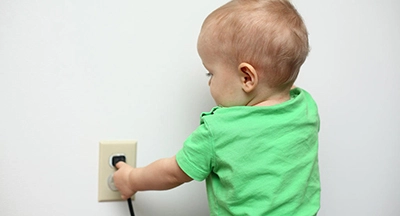
My oldest two kids were born pretty close to each other, so there is a time of my life that is mostly a blur of diapers, bottles, and very, very little sleep. However, there are a few memories that stand out - like when they did especially messy or especially adorable things, or, in the case of my daughter, especially dangerous things. My oldest daughter has always been curious, always wanting to know how things worked and why. One day, I was feeding the one-year old while she (age 2) was playing on the floor with her toys - or so I thought.
All at once, I realized that she had been quiet for a while which, for a mother, usually means trouble. I left the baby in his high chair and rushed to the front room. There, my daughter was sitting in front of an electrical outlet with the keys from my purse, holding two of them parallel to each other and preparing to stick them both in the outlet. Before I could think, I yelled, "no!" and interrupted her just in time. I don't want to think about what could have happened if I hadn't caught her at that exact moment, but you had better believe that afterward, we installed every safety device we could on every outlet in the house.
If you're a mother, father, aunt, uncle, grandparent, or caregiver to a small child, consider this: there are outlets on nearly every wall of the house, they are usually close to the ground, and they look just like two little faces. All of these are reasons why little busters could be attracted to your home's electrical outlets. The ease of accessibility plus the high level of danger for a little one makes it a huge household risk. But the good news is that keeping them safe is relatively easy and inexpensive. Below is a list of options for childproofing your home's outlets, ranging from about $6 total to about $15 per outlet.
In 2008, the National Electrical Code (NEC) was updated to require Tamper Resistant Receptacles (TRRs) in all new and remodeled homes. According to the National Fire Protection Association, TRRs' are the most effective way to prevent injuries associated with electrical receptacles. The NFPA also reports that 6-12 children in the U.S. die each year from severe shock and approximately 2,400 children are injured from shock or burns as a result of sticking items into an outlet. So, the NEC began requiring TRRs in homes to protect children.
How they work: TTRs' have spring-loaded shutters that close off the contact openings, or slots, of the receptacles. When a plug is inserted into the receptacle, both springs are compressed and the shutters then open, allowing for the metal prongs to make contact to create an electrical circuit. Because both springs must be compressed at the same time, the shutters do not open when a child attempts to insert an object into only one contact opening, and there is no contact with electricity. (nfpa.org)
So, start by checking to make sure that your home has these childproof outlets installed. If it doesn't, they are relatively easy to install yourself. Additionally, you can add nearly unlimited functionality to these outlets. They come with optional USB ports with high-speed charging capability, LED guide lights with automatic sensors, and GFCI functionality. Here is a video link explaining how to replace your outlets yourself. If you are unable to install new outlets yet, the following are additional ways you can protect your little ones.
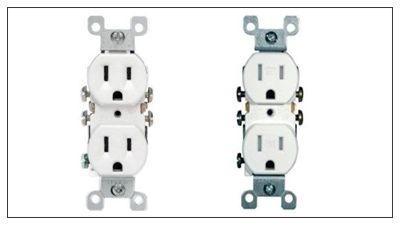
These are the easiest way to prevent little tikes from sticking little things in the outlets. They're cheap, relatively invisible, and also relatively difficult to remove from the outlet. This can be a bit of a pain when you need to use a protected outlet, but it means that little ones are protected as well.
But beware: these covers only work if the outlet is relatively new. If you have an older, looser outlet, these might not stay in. If the receptacle doesn't hold a plug, it won't hold a cover. And if your covers fall out or can be easily pulled out, at that point, they can turn into a choking hazard.
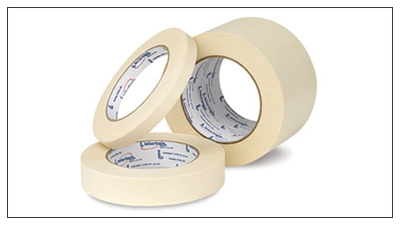
If you need an immediate solution for your outlets or would like a cheap, temporary fix while you're shopping for outlet covers, it's as easy as simply taping over outlets that aren't in use. One roll should cover every low-lying outlet in the house. Covering them with tape makes them inaccessible and way less appealing to a curious toddler. You can also use duct tape if you want it to stick a little better; however, duct tape could leave a sticky residue on your outlets and walls.
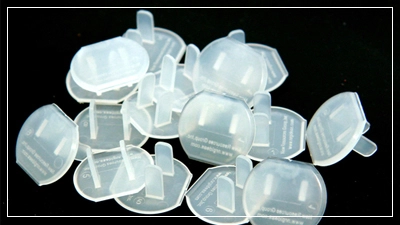
One option you could also consider is a full-outlet cover or decoy panel. It's a solid piece of plastic that can be painted to match the walls and provides a snap-on, solid cover for the outlet. No tools are required for install and it takes all the curiosity out of the outlet. It simply looks like a blank panel.
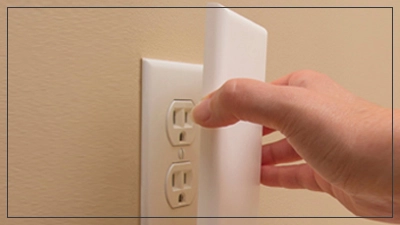
Press-fit outlet covers work in a similar way to childproof prescription bottles. You have to press both sides of the cover simultaneously in order to get the cover off. They are easier to remove for adults than the standard round ones and add a level of difficulty for little fingers. They are bigger, and therefore more obtrusive, but the convenience makes up for the bulk.
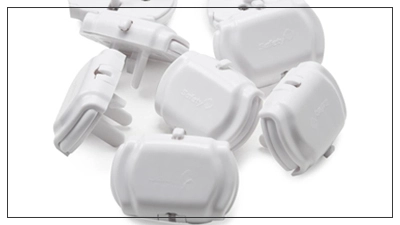
Locking outlet covers look a lot like the standard flat outlet covers but have a small keyhole on the front of each. This makes it impossible for children to access the outlet without a key. However, if the key is ever lost, it could mean some frustration.
Instead of getting an apparatus to put over your sockets, you could upgrade the plate itself. It's as easy as unscrewing the old one and placing the new one over the top. This doesn't require any electrical knowledge or wiring at all. These sliding cover plates shift the position of the receptacles so they don't line up. However, if someone wanted to use the outlet, it's as easy as moving the spring-loaded cover over to stick the plug in. When you're done using the outlet and remove the plug, the cover snaps back into place.
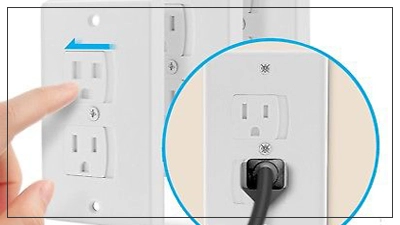
Locking outlet covers look a lot like the standard flat outlet covers but have a small keyhole on the front of each. This makes it impossible for children to access the outlet without a key. However, if the key is ever lost, it could mean some frustration.